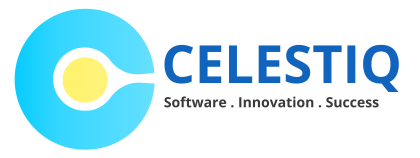You know you have a killer SaaS product idea and you’re ready to build it. But before you dive in and start coding, you need to think about how you’ll get that product deployed and continuously improved. That’s where DevOps comes in. DevOps, the combination of development and operations, is crucial for any SaaS company to master. It’s what allows you to build your product, test it, deploy it, monitor how customers are using it, find issues, fix those issues, and push updates – all at lightning speed. If you want to compete with the big dogs, you need to get really good at the DevOps process. Read on to learn why DevOps should be a priority and how to implement it for your own SaaS product development. You’ll be deploying new code in no time.
What Is DevOps and Why Is It Important for SaaS Companies?
As a SaaS company, adopting DevOps practices is crucial for building, testing, and deploying your software efficiently. DevOps, which combines software development and IT operations, allows your teams to collaborate more closely, speed up release cycles, and continuously improve your product.
For SaaS companies, implementing DevOps means you can get new features and updates out quickly. This continuous delivery model is key for keeping customers happy and engaged with your product. DevOps also helps reduce errors through automated testing and monitoring. When you can detect issues early on, you avoid major headaches down the road.
Some of the DevOps tools and techniques you should utilize include:
Continuous integration (CI): Automatically building and testing code changes as developers work. This allows you to catch bugs early and release updates faster.
Microservices architecture: Developing your product as a suite of small, independent services. This makes updates easier to develop and test, and minimizes the impact of changes.
Automated testing: Running automated unit, integration, and end-to-end tests to check for errors, then fixing them right away. This ensures high quality and reliability.
Monitoring and alerting: Tracking key metrics and setting up alerts to notify teams of any dips in performance or availability. Quickly becoming aware of and resolving issues is key for SaaS success.
Containerization: Packaging your application and its dependencies into containers that can run on any infrastructure. This simplifies deployment and scaling.
By embracing DevOps, your SaaS company can build better software, faster. Continuous delivery, automated testing, and monitoring help minimize errors and keep your customers happy. And with the right tools and processes in place, your product team will be able to focus on innovation rather than putting out fires. DevOps is a must for any SaaS company looking to thrive.
How DevOps Improves SaaS Product Development
As a SaaS company, you know that frequent updates and continuous delivery are key to keeping your customers happy. That’s where DevOps comes in. DevOps is the combination of cultural philosophies, practices, and tools that increases an organization’s ability to deliver applications and services at high velocity.
For SaaS products, DevOps improves development and deployment in a few important ways:
-Faster release cycles. By automating the build, test, and deployment processes, DevOps allows you to release updates more quickly and frequently. This means new features get to your customers faster and feedback loops are tighter.
-Increased productivity. DevOps tools and workflows make developers’ lives easier by handling repetitive tasks, which boosts morale and reduces burnout. Your team can focus on building great features rather than fighting fires.
-Improved quality. With automated testing and monitoring in place, issues can be detected and fixed sooner. This results in higher quality updates that provide value to customers without disruption.
-Reduced risk. Smaller, incremental changes are less risky than huge, infrequent releases. If there is a problem, it can be rolled back quickly before major impact. This gives developers more confidence to release changes often.
By adopting a DevOps culture and the right mix of tools for your needs, your company can transform the way you build and release your SaaS product. The benefits of faster, higher-quality updates that delight customers and empower developers make DevOps a critical ingredient for success. Isn’t it time you embraced the DevOps movement? Your customers and engineers will thank you.
DevOps Best Practices for SaaS Companies
As a SaaS company, following DevOps best practices is key to developing and deploying high-quality products. Some recommendations:
Automate Everything
Automating manual processes like testing, deploying, and monitoring saves time and reduces human error. Use tools to:
Continuously integrate code changes
Build and test software with each commit
Deploy new versions automatically
Monitor systems and send alerts 24/7
Release Frequently
Releasing updates frequently, even small changes, has many benefits. It:
Gets new features to customers more quickly
Makes issues easier to identify and fix since the changes are smaller
Encourages a culture of continuous improvement where you’re always optimizing and enhancing
Aim for releasing at least once a week or a few times a month. Have a consistent release schedule and stick to it.
Monitor and Measure Everything
Track key metrics and monitor systems to gain visibility into the health and performance of your application. Some things to measure include:
Application response times
Error and failure rates
Usage and adoption statistics
Churn and renewal rates
Customer satisfaction scores
Use the data to make informed decisions and optimize the customer experience. Send alerts if anything is amiss so you can remedy issues fast.
Embrace a DevOps Culture
At its core, DevOps is a cultural shift that brings development and operations teams together. Key values include:
Collaboration: Foster an environment of shared responsibility between teams.
Continuous learning: Provide opportunities for constant upskilling and knowledge sharing.
Customer focus: Make delivering value to customers the top priority.
Agility: Be able to pivot quickly based on feedback and changes.
Transparency: Share goals, metrics, wins, losses, and lessons learned openly across the organization.
Adopting these principles and a growth mindset will transform how your company builds and delivers software. The rewards of DevOps are well worth the effort.
DevOps Tools That Enhance SaaS Product Development
As a SaaS product development company, having the right DevOps tools in place is crucial for building and deploying high-quality software. DevOps brings together software development and IT operations, automating and integrating the processes between the two. For SaaS companies, this means faster development cycles, quicker deployments, and higher quality products.
Version Control
Version control systems like Git allow your team to collaborate on code and track changes. With Git, developers can work on features individually, then merge them together. This enables parallel development and experimentation without worrying about overwriting each other’s work.
CI/CD Pipelines
Continuous integration and continuous delivery (CI/CD) pipelines automatically build, test, and deploy your code. Whenever a developer pushes changes to Git, the CI/CD pipeline kicks off. This ensures that new code integrates well with the existing codebase and allows you to release updates quickly. Popular CI/CD tools for SaaS products include Jenkins, CircleCI, and TravisCI.
Infrastructure as Code
Infrastructure as code tools like Terraform and AWS CloudFormation let you provision and manage infrastructure using code. This enables you to spin up new environments quickly and consistently. For SaaS companies, this could mean deploying a new staging environment with the click of a button or scaling your production infrastructure to meet increased demand.
Monitoring
Robust monitoring is essential for any SaaS product. Tools like DataDog, New Relic, and Azure Monitor give you visibility into the performance and availability of your application. You’ll want to monitor metrics like uptime, response times, error rates, and resource usage. Monitoring provides alerts when there are issues, allowing you to resolve them quickly and deliver a good experience to your customers.
Using a combination of these DevOps tools, SaaS companies can achieve continuous improvement, fast releases, scalability, and a stellar customer experience. For any SaaS product development company, DevOps is instrumental to success. Focusing on automation, collaboration, and tooling, DevOps supercharges your team’s productivity and allows you to build better software, faster.
FAQ: Common Questions About DevOps for SaaS
What is DevOps?
DevOps combines software development (Dev) and IT operations (Ops) to shorten the systems development life cycle. It aims to provide continuous integration and delivery with high software quality.
Why is DevOps important for SaaS products?
For SaaS products, DevOps is critical for:
Rapid feature releases: With continuous integration and delivery, new features can be developed and released quickly based on customer feedback. This allows SaaS companies to stay ahead of competitors.
Reliability and uptime: With DevOps, system changes can be made frequently but with minimal errors. This results in higher reliability and uptime, which are extremely important for SaaS products.
Security: DevOps also emphasizes security by integrating security testing into the software delivery pipeline. This is essential for SaaS products to prevent vulnerabilities and protect customer data.
How does DevOps work?
Some of the DevOps practices used by SaaS companies include:
Continuous integration: Developers integrate code into a shared repository frequently, at least daily. This allows for rapid and frequent iterations on software.
Continuous delivery: Automated testing is done for every code change to detect bugs early. Software can be released to production at any time.
Microservices: Large software is broken down into smaller, independent services that can be built, tested, deployed independently. This makes software more flexible and scalable.
Automation: Repetitive tasks like testing, building, and deploying software are automated. This speeds up the software delivery process and reduces errors.
Monitoring: Key metrics are closely monitored to detect problems early. Monitoring also provides data to help optimize software performance and reliability.
What are the benefits of DevOps for a SaaS company?
The main benefits of DevOps for SaaS companies include faster time to market, higher software quality, improved customer experience, and a competitive advantage. By adopting DevOps, SaaS companies can accelerate innovation and better respond to changes in the market.
Conclusion
So there you have it. As you’ve seen, implementing DevOps practices is crucial for any SaaS company looking to build and deploy products successfully. By bringing your development and operations teams together, you’ll be able to push out new features and updates quickly without compromising quality. Your customers will appreciate the fast turnaround and minimal downtime.
More importantly, DevOps allows for continuous improvement and optimization. Your teams can make incremental changes, see how customers respond, and make adjustments on the fly. In today’s fast-paced SaaS market, the ability to adapt rapidly is what separates the winners from the losers. If you want to keep your customers happy and outpace your competitors, DevOps is the way to go.
What are you waiting for? Talk to your team, pick a few DevOps practices to implement, and get to work streamlining your development cycles. Your customers and bottom line will thank you for it! The future is DevOps, so better hop on the bandwagon now. Success awaits!


